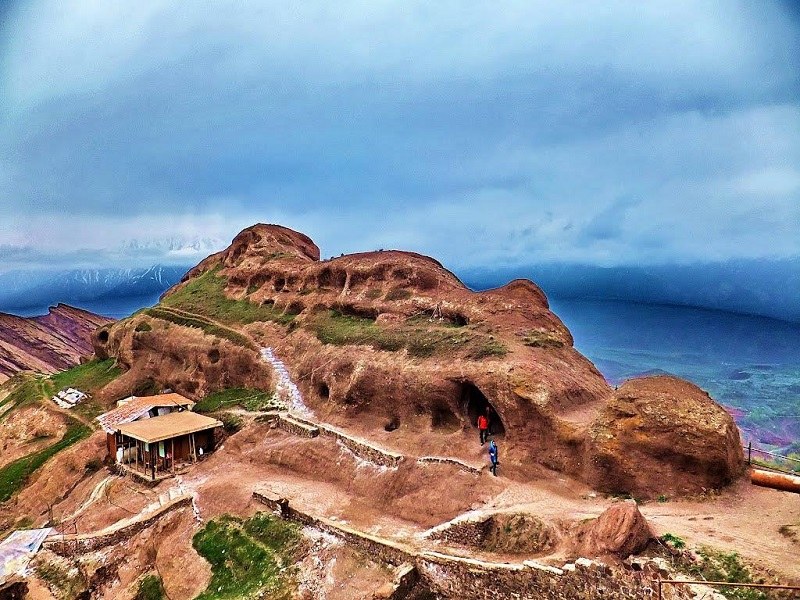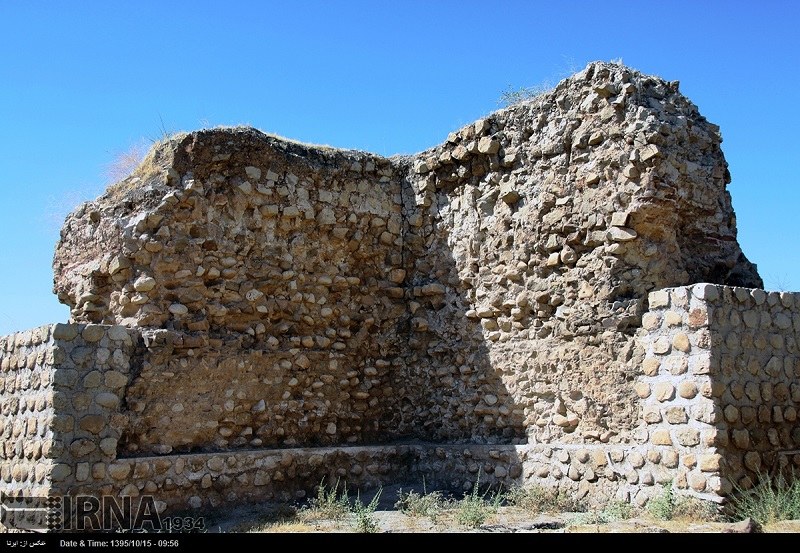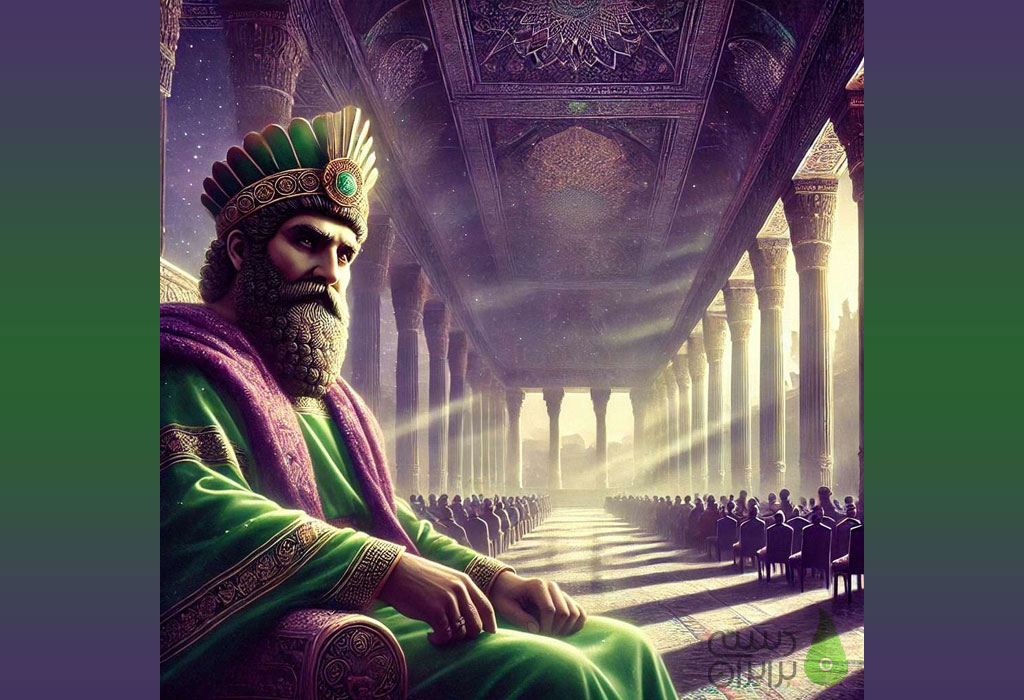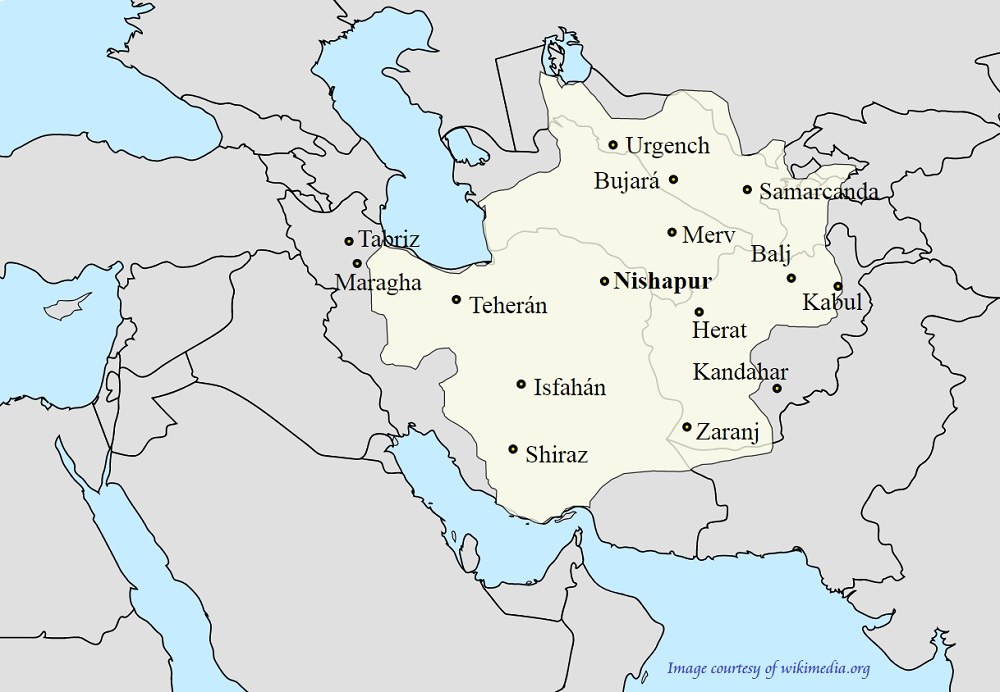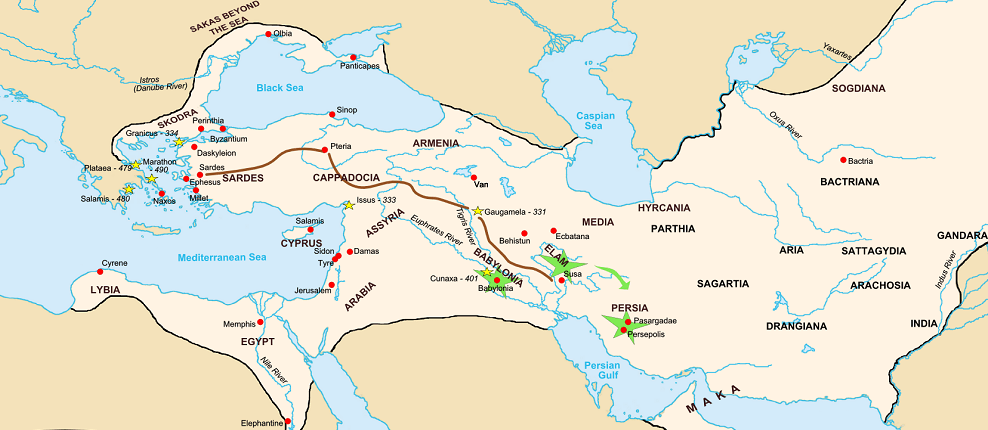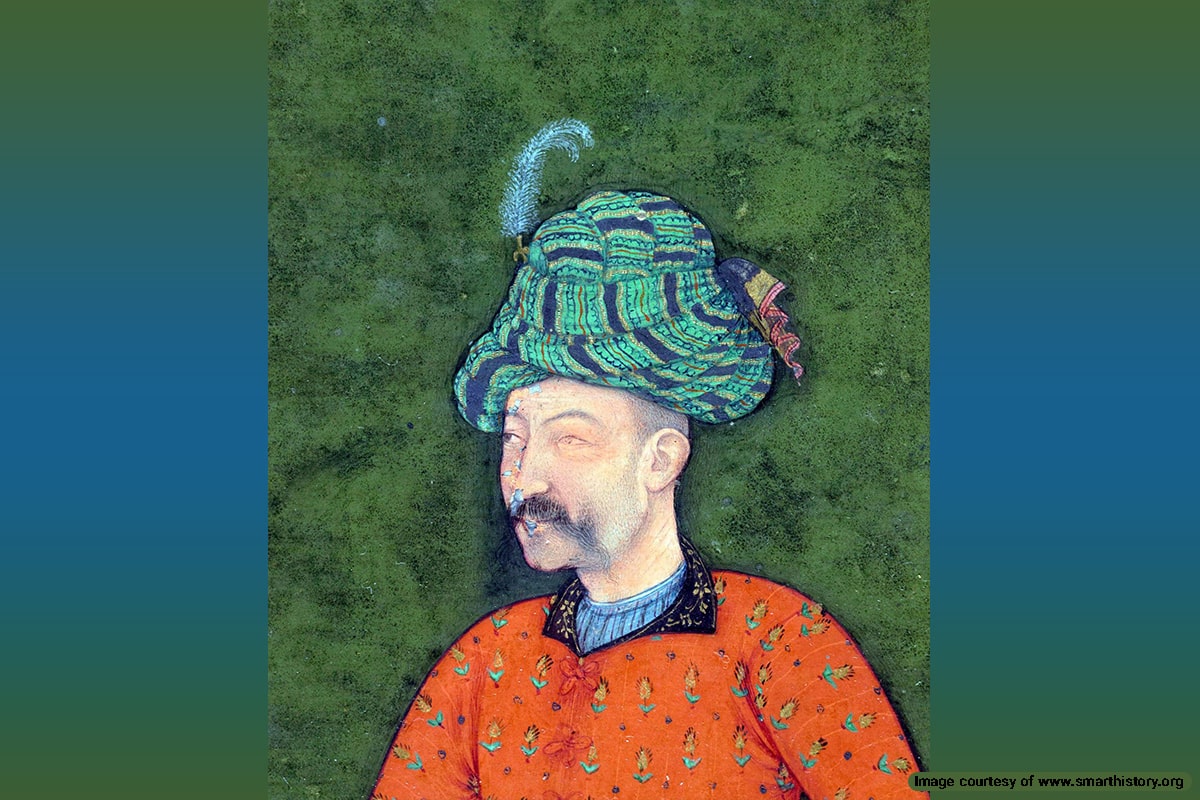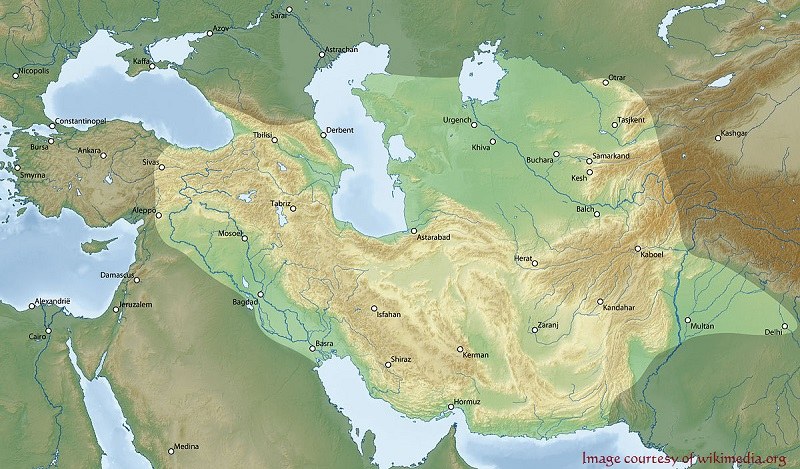
The history of Timurids is full of bloodshed and aggression against their neighbors. Iran has also been horribly affected by their invasion. Timur founded Timurids dynasty during the late 14th century. He was a Turk from Transoxiana nomads and son of a warrior. He had adopted Islam as his religion. He also showed some interests in Sufism and Sufis. Because of what happened to Timur, he is also known and called Tamerlane.
Timur and his companions survived on stealing sheep from other tribes. In one of such raids for stealing sheep, Timur was wounded in the leg and shoulder. Afterward he could not bend his right knee or lift his right arm, and so he became known as “the Lame”.
Timur began his career as a bandit-warrior with only a few companions. When he was young, he rescued a town around Samarqand by organizing a group of guerilla combatants. Then, he preserved the right of governing the town for himself. This was how he entered the scene of his political life. He became the governor of Bactria and went to Transoxiana. Later he declared Samarqand as his capital and fabricated some genealogy to link his ancestry to Chengiz Khan and his legacy.
Little by little, this young militant turned to be a great military campaigner and conqueror that waged war on millions of innocent people. Leading his horrifying army, Timur exerted a military invasion in Iran whose consequences remained there until the rise of Safavids. During the reign of Timur and his successors, every corner of Iran was subject to the military invasion and occupation of Minor Asian Turkmen and Central Asian Turks.
History of Timurids & Timur’s Campaigns
After beginning to rule from Samarqand, he spent 10 years to conquer Kharazm. He attacked Transoxiana and seized Heart. At the age of 40, Timur decided to conquer Khorasan. During 4 years of continual incursions to Khorasan and Sistan, his army caused blood baths in the regions. In Herat, his army cut off the heads of inhabitants and made minarets out of them. As the news of his head-minarets spread over the other regions, he could continue his conquest more easily.
Then, he arrived in Esfehan and massacred 70,000 innocent people in one day. Some believe 200,000 is the right number of the victims. Then, he built up 50 head-minarets near the city walls. As more people resisted against the invaders, more heads were cut off to build more head-minarets.
The inhabitant of Shiraz, who had heard of the news in Esfehan, decided not to resist. So, they escaped a big massacre, but their properties were looted when their city was seized. The governor of Shiraz had also fled before the arrival of Tuimur’s army in the city.
Then, Timur was informed of uprisings in Khwarazm. Therefore, he crushed the uprising as well as the city so savagely that the city was completely destroyed and transformed into a desert.
When he was 58, Timur led his next invasion of Iran, which took 5 years. Baghdad was also conquered without any resistance to his army. Then, he attacked Kurds of Iraq and set up head-minarets. As it can be easily observed, the history of Timurids has not left a pleasant legacy of the people of the region.
Georgia and Armenia were his next targets. He went through the Caucasus region. Moscow was the subject of his next attacks. In the end, Moscow was also treated like other cities by his army. At the end of his last military campaign to Transoxiana, Timur assigned his conquered regions to his sons.
At the age of 64, he got married to his 9th wife. His love in her did not prevent him from arranging for a raid on India. The reason for this attack was his opinion about the Muslim kings of India who had not taken the spreading and propagating of Islam seriously.
So, he set out for his holy war, jihad. Of course, the passion for plundering the wealth of India was not less than gaining spiritual success! On the way toward Delhi, he arrested 100,000 Hindu Prisons of war. Having been afraid of their rebellion, he had them all killed. The joy of this massacre was more than 80,000 lives that he took later in India.
The city was looted by his army and India was divided among his commanders. Having returned to Samarqand, Timur could not spend enough time to enjoy himself, because he had to attack Iran to suppress some uprisings.
When he was 67, he invaded Azerbaijan and executed several people after he crushed the uprising. He left one of his sons there to rule the region and set off for Georgia and Asia Minor. This military campaign took him 5 years. On the way back home, he got many churches and abbeys destroyed in addition to killing many in his way. On the same trip, he buried 4,000 Armenian POWs alive. Ottomans territories were also raided during this campaign.
Before going back to Samarqand, he led a brutal assault in Syria to crush people’s uprising there. In revenge for the death of some of his commanders, Timur beheaded 40,000 in Baghdad. Then, he attacked Georgia once again. After gaining victory there, he initiated another invasion of Ottomans’ territories. Ottomans’ army received a deadly blow from Timur’s army. Afterward, Timur seized Izmir, which was under the control of crusaders.
When 70, Timur still thought of fighting. His vast conquered territories needed to be organized and united more than anything else, but he was not efficient enough to do so. Instead of this, he dispatched his army to kill Chinese apostates who had not answered his taxation requirements properly.
On the way, his tired army faced the cold of winter. Also, he got killed and died in his military tent. Right after his death, his territories were disintegrated. The history of Timurids didn’t come to an end here. His sons continued what he had started.
Timur’s Successors
The history of Timurids didn’t come to an end with Timur’s death. The heir of Timurs territories were in a prolonged state of war. So, Timur’s conquered regions became independent hostile governments. Even in a country like Iran, there were three people governing in three different territories. One of them was Shahrokh, son of Timur, who was ruling in Khorasan and eastern parts of Iran.
Gradually, he gained authority over all parts of Iran. He was a warrior, like his father, but sought peace too. He tried to avoid war as long as it was possible. For a period of 30 years, he led a powerful and solid government from China to Rome and from Turkistan to India.
Ulug Beg was Shahrokh’s only child who survived after his death. Of course, he could only rule for three years before he died. Ulug Beg did not show any outstanding authority, efficiency or talent in his ruling period.
Timudis’ Achievements
Unlike what was done outside his empire, inside his territories, Timur enriched Samarqand, his capital, and the areas surrounding it with the loots of his campaigns.
Shahrokh initiated reconstructing some of the devastated areas. He showed interest in participating in the circles of musicians, poets, and singers. Of course, he took part in the circles of theologians, Koran readers and pilgrimage journeys to holy shrines. The history of Timurids had started a different phase in Iran.
Unlike his father, His religious belief in Islam was genuine. He ordered mosques, rebats, and mausoleums to be restored. He established friendship and trade with his neighboring countries. His capital, Herat, became the center of art and literature. His wife, Goharshad was also a patron of arts. As a result of her endeavors, Goharshad mosque in Mashhad and Goharshad Friday mosque in Herat were built.
Shahrokh set up a huge library in Herat in which 40 calligraphers copied books. The masterpiece of the artists in bookmaking art was the impressive Baysonqory Shahnameh.
Ulug Beg promoted several scientific activities during 38 years of governing Transoxiana under his father’s authority. He supported the mathematicians of his time a lot so that they could construct the huge and well-equipped observatory of Samarqand. Finally, mathematicians succeeded to work out an astronomical table known as Ulug Beg’s astronomical table.
Timurids were zealous followers of Sunni Islam and suppressed any Shiite movements severely. Under Timurids, two major Shiite movements were triggered by Sufis, which had anti-government goals. Although both of them were crushed very badly, they helped the Iranian community break out of its hard shell of being stagnant and passive.
Fall of Timurids’ History
When Ulug Beg’s son died one year after his father’s death, Timurids power declined considerably in Samarqand. Several clashes and wars began to disintegrate Timurids’ conquered territories.
In the western part of Timurid’ empire, there were two major Turkmen tribes who lived in a hostile manner toward each other. They were Aq-Qoyunlu, the owners of white sheep and Qara-Qoyunlu, the owners of black sheep. The ongoing war between those two tribes over pastures and water for their sheep weakened their power. As a result, Safavids managed to take control of Iran.
In the eastern part of Timurid’ empire, there were Uzbeks who tried to prove their power. They had gained control over Samarqand.
The history of Timurids is another sad chapter of Iran’s past. Iranians were living under the suppression of the Timurids more than a century. Iran suffered a lot. Huge destructive attacks had left ruins here and there. The country needed to accomplish a lot to regain what had lost.






